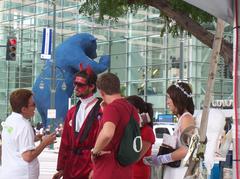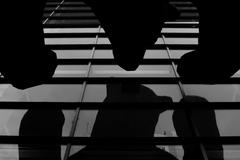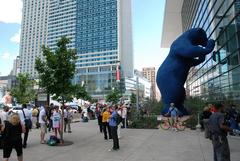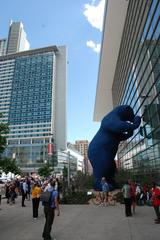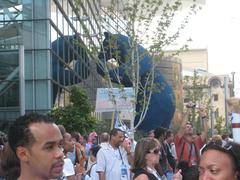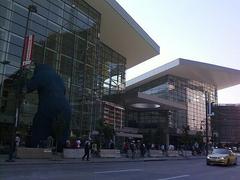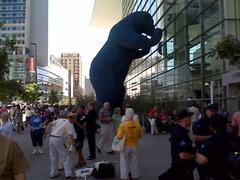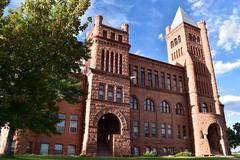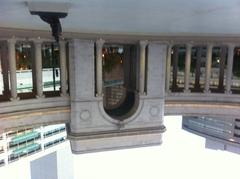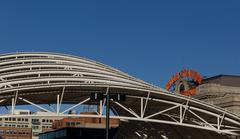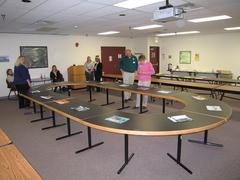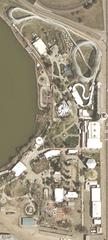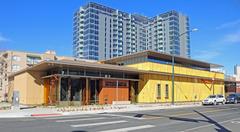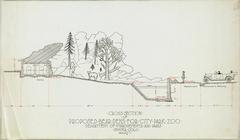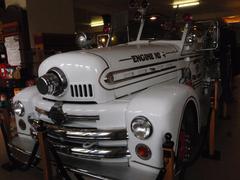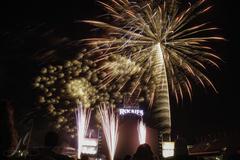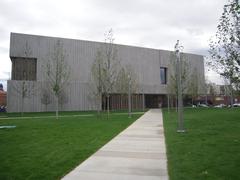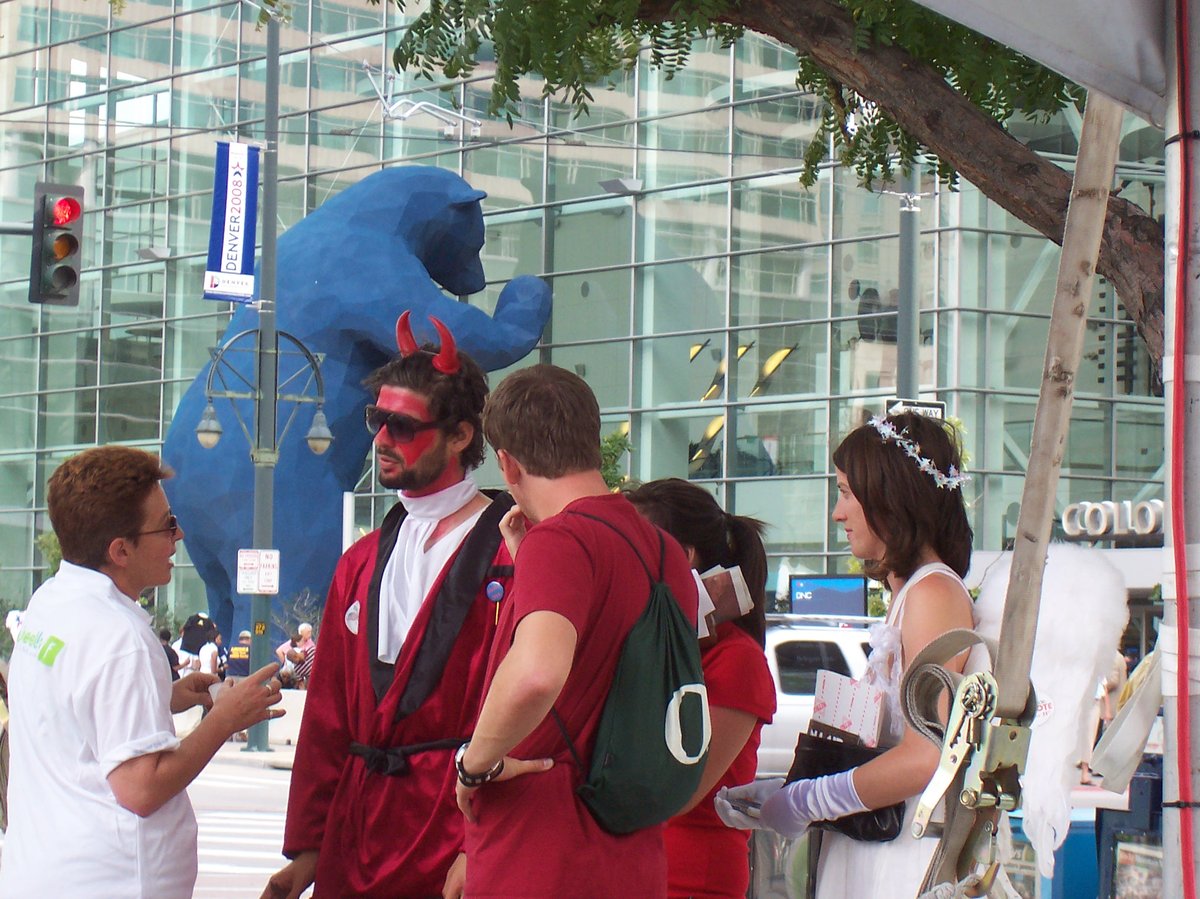
Visiting Big Blue Bear: Hours, Tickets, and Tips
Date: 19/07/2024
Introduction
The Big Blue Bear, officially named “I See What You Mean,” is a 40-foot-tall sculpture created by artist Lawrence Argent. Located outside the Colorado Convention Center in downtown Denver, this striking piece of public art has become one of the city’s most iconic landmarks since its unveiling in June 2005. The sculpture’s playful and curious pose, peering into the convention center, invites viewers to engage with their surroundings and sparks conversations about art and community. The Big Blue Bear symbolizes Denver’s commitment to public art and has captured the hearts of both locals and visitors, making it a must-see attraction. Argent’s inspiration for the bear came from a photograph of a bear peering into a house, which he saw in a newspaper. This led to the conceptualization of a bear curiously looking into the convention center, a concept that resonated with the city’s artistic landscape (Denver Public Art). The creation of the bear involved intricate design processes, advanced technology, and was a significant engineering feat. The vibrant blue color, chosen serendipitously, adds to the sculpture’s visual impact and charm (Denver Art Museum).
Table of Contents
- Introduction
- History
- Visitor Information
- Cultural Significance
- Impact on Public Art in Denver
- Maintenance and Preservation
- Community Engagement and Events
- Future Prospects
- FAQ
- Conclusion
History
Origins and Conceptualization
The concept for the Big Blue Bear originated in 2002 when Lawrence Argent was commissioned by the Denver Office of Cultural Affairs to create a piece for the Colorado Convention Center. Argent was inspired by a photograph he saw in a newspaper of a bear peering into a house, which sparked the idea of a bear curiously looking into the convention center (Denver Public Art).
Design and Construction
The design process for the Big Blue Bear was intricate and involved advanced technology. Argent used 3D modeling software to create the bear’s form, ensuring that it would be both structurally sound and visually impactful. The bear is composed of a steel framework covered with a fiberglass and cement composite, which was then painted a vibrant blue. The choice of blue was somewhat serendipitous; Argent initially considered a more natural color but opted for blue after seeing a small blue bear figurine in his studio (Denver Art Museum).
Installation and Unveiling
The installation of the Big Blue Bear was a significant engineering feat. The sculpture was fabricated in pieces and assembled on-site at the Colorado Convention Center. The bear was officially unveiled in June 2005 and quickly became an iconic symbol of Denver. Its playful and inquisitive nature resonated with both locals and visitors, making it a beloved public art piece (Visit Denver).
Visitor Information
Tickets and Visiting Hours
One of the best things about the Big Blue Bear is that it is free to visit. The sculpture is located outside the Colorado Convention Center and is accessible to the public 24/7. There are no tickets required to see the bear, making it an easy and budget-friendly attraction.
Travel Tips
- Getting There: The Colorado Convention Center is located in downtown Denver, making it easily accessible by public transportation, including light rail and buses. Parking is also available nearby.
- Best Time to Visit: The Big Blue Bear is an outdoor sculpture, so it’s best to visit during daylight hours to fully appreciate its vibrant color and playful design. Early mornings or late afternoons are ideal for avoiding crowds.
- Photography Tips: Due to its size, capturing the entire bear in one shot can be challenging. Try different angles and perspectives, and don’t forget to take a selfie with the bear peering over your shoulder.
Nearby Attractions
- Denver Art Museum: Located just a short distance away, the Denver Art Museum offers a wide range of exhibits and collections for art enthusiasts.
- 16th Street Mall: A bustling pedestrian mall with shops, restaurants, and entertainment options, perfect for a leisurely stroll after visiting the Big Blue Bear.
- Union Station: A historic landmark and transportation hub with dining, shopping, and events.
Accessibility
The area around the Big Blue Bear is wheelchair accessible, and the sculpture can be easily viewed from the sidewalk. The nearby Colorado Convention Center also offers accessible entrances and facilities.
Cultural Significance
The Big Blue Bear has transcended its role as a mere sculpture to become a cultural landmark in Denver. It symbolizes the city’s commitment to public art and its vibrant cultural scene. The bear’s curious pose, peering into the convention center, invites viewers to engage with their surroundings and sparks conversations about art and community. It has also become a popular spot for photographs, further embedding it into the social fabric of the city (Colorado Public Radio).
Impact on Public Art in Denver
The success of the Big Blue Bear has had a lasting impact on public art in Denver. It has inspired other large-scale public art projects and has helped to elevate the city’s reputation as a hub for innovative and engaging public art. The bear’s popularity has also contributed to increased tourism, with many visitors specifically seeking out the sculpture during their trips to Denver (Denver Post).
Maintenance and Preservation
Maintaining a sculpture of this size and prominence requires ongoing effort. The Big Blue Bear undergoes regular inspections and cleaning to ensure it remains in pristine condition. The city of Denver has allocated funds for the bear’s upkeep, recognizing its importance as a cultural asset. In 2019, the bear underwent a significant cleaning and restoration process to address wear and tear from weather and environmental factors (City of Denver).
Community Engagement and Events
The Big Blue Bear has become a focal point for community events and activities. It is often featured in local festivals, art walks, and cultural celebrations. The bear’s presence has also inspired educational programs and workshops, encouraging people of all ages to explore their creativity and learn about public art. These initiatives have helped to foster a sense of community and pride among Denver residents (Denver Arts & Venues).
Future Prospects
Looking ahead, the Big Blue Bear is expected to continue playing a central role in Denver’s cultural landscape. Plans are in place to enhance the area around the sculpture with additional public art installations and interactive features. These efforts aim to create a dynamic and engaging environment that attracts even more visitors and enriches the cultural experience of the city (Denver Cultural Plan).
FAQ
Q: What are the visiting hours for the Big Blue Bear?
A: The Big Blue Bear is accessible 24/7 as it is located outside the Colorado Convention Center.
Q: Do I need tickets to see the Big Blue Bear?
A: No, visiting the Big Blue Bear is free of charge.
Q: Where is the Big Blue Bear located?
A: The Big Blue Bear is located at the Colorado Convention Center in downtown Denver.
Q: Is the Big Blue Bear accessible for people with disabilities?
A: Yes, the area around the sculpture is wheelchair accessible.
Q: Are there other attractions nearby?
A: Yes, nearby attractions include the Denver Art Museum, 16th Street Mall, and Union Station.
Conclusion
The Big Blue Bear stands as a testament to the power of public art to transform spaces and connect communities. Its history, from conceptualization to its current status as a cultural icon, reflects the creativity and vision of its creator, Lawrence Argent, and the city of Denver’s commitment to fostering a vibrant and inclusive cultural scene. As the bear continues to captivate and inspire, it remains a beloved symbol of Denver’s artistic spirit and community pride. Be sure to visit this magnificent sculpture and explore all that Denver has to offer!
